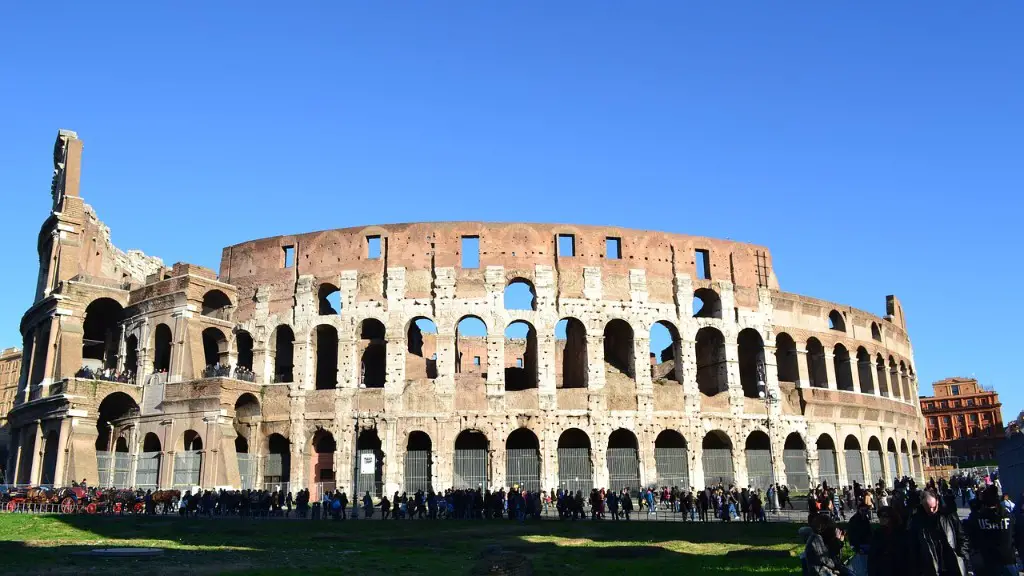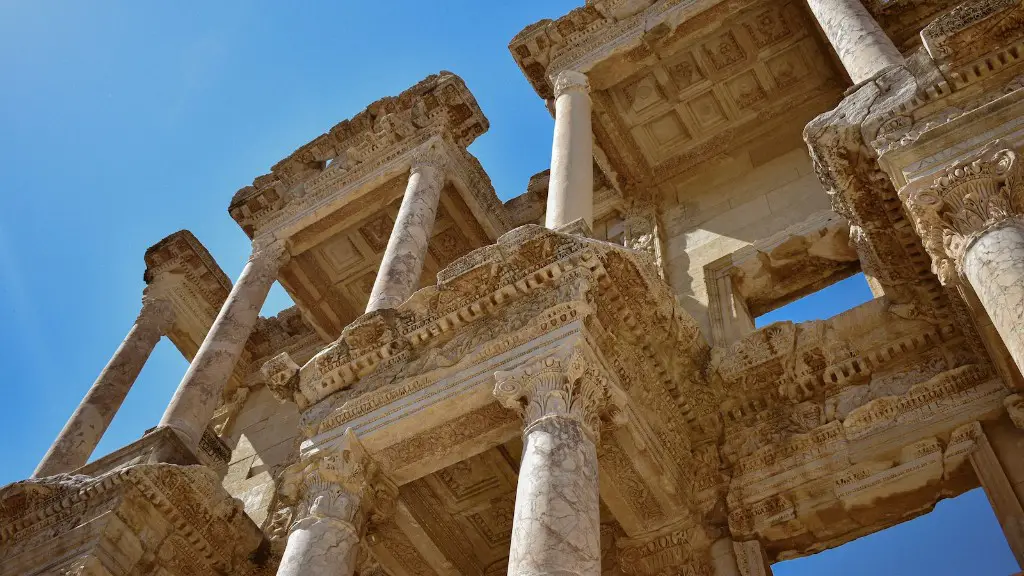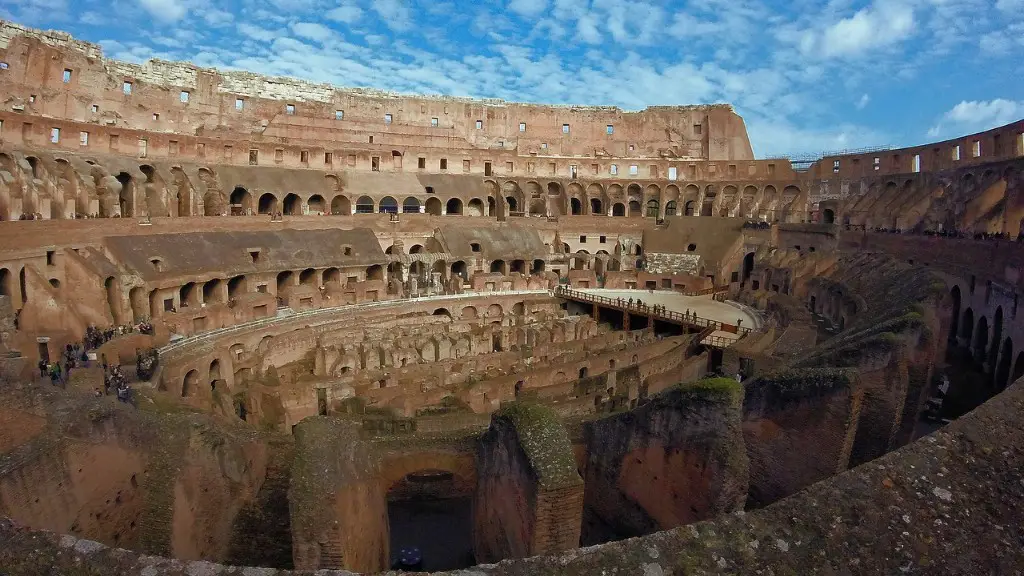Life in Ancient Rome was drastically different from life today. What we now recognize as a regular childhood was very different in Ancient Rome. Children often started working from a young age, with even the most privileged children expected to be expected to help out. It was common for children to start helping their parents with chores by the time they were four or five years old.
Boys, in particular, were expected to start early training for their future professions. Roman children were typically being taught the basics of their father’s profession or trade from a very early age. Girls were generally expected to spend their time learning household skills and duties, such as weaving, cooking and sewing.
Roman children were raised to be obedient, polite and respectful to their elders, especially those in authority. This was especially true when it came to boys, as they were expected to be particularly well-mannered. For this reason, Roman children were taught to be humble and submissive. It was also customary for boys to learn martial arts to prepare them for military service.
Education during Ancient Rome was rather limited. Boys were lucky enough to sometimes have access to a formal education, taught by a teacher, tutor, or educator called a litterator. Oftentimes, tutors in wealthier households would have specialized in a particular subject like literature, mathematics, or philosophy. On the other hand, less privileged children had to rely on their parents teaching them basic reading, writing, and arithmetic at home.
Sports and leisure activities in Ancient Rome were rather simple. Boys would often play dice games or board games while girls would play with dolls. Children’s toys were usually made of clay or cloth and were fairly rudimentary. Boys would also often take part in mock war games, while girls would engage in needlework and spinning. Both boys and girls could take part in chariot races, which were very popular in Ancient Rome.
Religion was also an important part of life for Roman children. They were taught to revere the gods and goddesses of the Roman pantheon and to respect their parents and elders. Religion played an important role in children’s education and moral upbringing. Children would also often make offerings and sacrifices to the gods and goddesses in hopes of earning their favor.
Overall, life for a child in Ancient Rome was much different than life today. Children were expected to grow up fast and were required to begin learning at an early age. Boys were usually taught their father’s trade or profession while girls were expected to learn household skills and duties. Education was limited and toys were plain and simple. Religion was also an important part of life and children were taught to honor the gods and goddesses of the Roman pantheon.
Clothing
Clothing for children in Ancient Rome was rather plain and simple. Boys would usually wear a sleeveless tunic and sandals, while girls would don a long stola and shawls. Children from wealthy families could sometimes afford to buy more elaborate and expensive clothing, such as silk and linen, but this was typically reserved for adults and special occasions. In public, children would often have to wear a cloak or a cape to cover up their clothing.
Clothing for children was usually plain, but colors could sometimes be used to signify their social status or family wealth. For example, wealthy families often dressed their children in bright colors, while families of low status usually dressed their children in drab colors. Boys and girls would also often wear headdresses or caps to protect their heads from the sun.
In addition to clothing, most children would also often wear jewelry and other accessories, such as amulets and charms. These items were seen as a reflection of their social status and were usually presented by their families. They were seen as a sign of wealth and were often colorful and expensive.
Overall, clothing for Roman children was typically plain and simple, but could sometimes be a reflection of their family’s wealth and status. Boys and girls would often wear capes and headdresses to protect themselves from the sun and could sometimes accessorize their clothing with colorful, expensive jewelry.
Ages and Rites of Passage
In Ancient Rome, children were typically divided into three age group: infantes, pupilli, and adolescentes. The infantes were usually under the age of seven; the pupilli were usually between the ages of seven and eleven; and the adolescentes were above the age of eleven. There were also various rites of passage for Roman children, depending on their age and social status.
For the infantes, the main rite of passage was to learn to walk and to talk. For the pupilli, the rite of passage was to be able to recite their memorized lessons from school. For the adolescentes, the main rite of passage was to learn adult responsibilities such as military training or a trade. Wealthy families would often have their children participate in theatrical performances or demonstrations of their scholastic abilities.
Rites of passage were very important in Ancient Rome and usually served as a way of displaying a family’s wealth and status, as well as the education and training of their children. These rites would often involve a ceremony or event, such as a reception or feast, which would be attended by prominent members of the community.
Overall, children in Ancient Rome were usually divided into three age groups and underwent various rites of passage depending on their age and social status. These rites served as a way to display a family’s wealth and status, as well as the education and training of their children.
Medical Care and Hygiene
Medical care for children in Ancient Rome was very limited. Most medical procedures were gruesome and barbaric, relying on superstition and traditional remedies more than modern science. Most medical practitioners worked in the same way and there was very little understanding of the inner workings of the human body. People often believed in the supernatural and many diseases were attributed to the displeasure of the gods or bad luck.
It was also common to avoid certain medical treatments because of the cost or the pain involved. Some common remedies used in Ancient Rome included herbs, potions, lithotherapy (using rocks and minerals to treat illnesses), and surgery. Despite the lack of technical knowledge of diseases and the importance of hygiene, some medical professionals did indeed take sanitation measures seriously.
Hygiene in Ancient Rome was also very basic. Most homes would have a bathhouse, which would have a source of running water and even heated pools. People would often take a bath a few times a week, but it was not a regular practice. Public baths were also very common, but these would typically be located near polluted areas and would be used mostly by the lower classes.
Overall, medical care and hygiene in Ancient Rome were rather rudimentary. Most medical procedures were barbaric and often relied on superstition and traditional remedies. Hygiene was also limited, with people relying mostly on public baths and bathing a few times a week.
Conclusion
Life for a child in Ancient Rome was drastically different from life today. Children were expected to grow up fast and were required to learn the basics of their father’s profession at an early age. Education was limited and toys were plain and simple. Clothing was typically plain, but could sometimes be a reflection of their family’s wealth and status. Rites of passage were very important in Ancient Rome and usually served as a way of displaying a family’s wealth and status, as well as the education and training of their children. Medical care was limited and hygiene was basic, with people relying mostly on public baths and bathing a few times a week.





